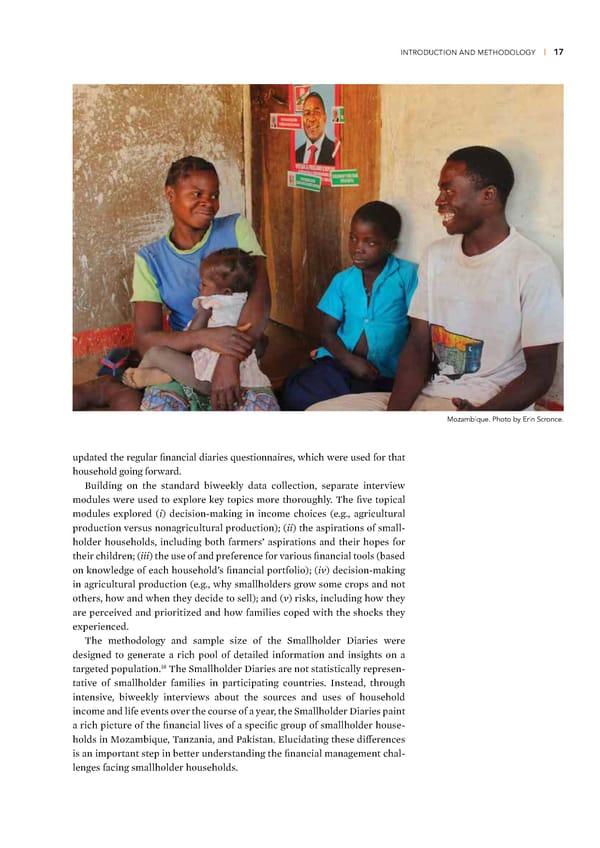INTRODUCTION AND METHODOLOGY | 17 Mozambique. Photo by Erin Scronce. updated the regular financial diaries uestionnaires, which were used for that household going forward £uilding on the standard biweely data collection, separate interview modules were used to explore ey topics more thoroughly Œhe five topical modules explored (i) decision-maing in income choices (eg, agricultural production versus nonagricultural production) (ii) the aspirations of small- holder households, including both farmers’ aspirations and their hopes for their children (iii) the use of and preference for various financial tools (based on nowledge of each household’s financial portfolio) (iv) decision-maing in agricultural production (eg, why smallholders grow some crops and not others, how and when they decide to sell) and (v) riss, including how they are perceived and prioriti—ed and how families coped with the shocs they experienced Œhe methodology and sample si—e of the Smallholder ‰iaries were designed to generate a rich pool of detailed information and insights on a …¡ targeted population Œhe Smallholder ‰iaries are not statistically represen- tative of smallholder families in participating countries €nstead, through intensive, biweely interviews about the sources and uses of household income and life events over the course of a year, the Smallholder ‰iaries paint a rich picture of the financial lives of a specific group of smallholder house- holds in –o—ambiue, Œan—ania, and aistan œlucidating these differences is an important step in better understanding the financial management chal- lenges facing smallholder households
 Financial Diaries with Smallholder Families Page 27 Page 29
Financial Diaries with Smallholder Families Page 27 Page 29